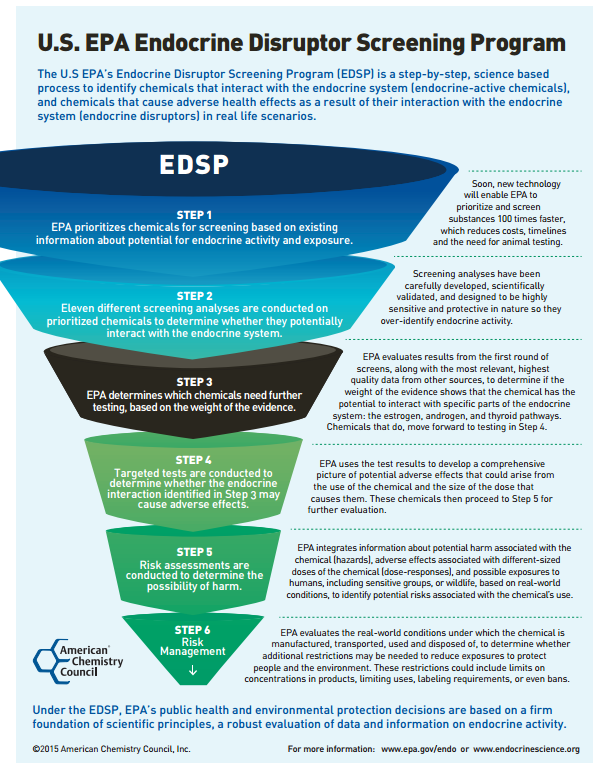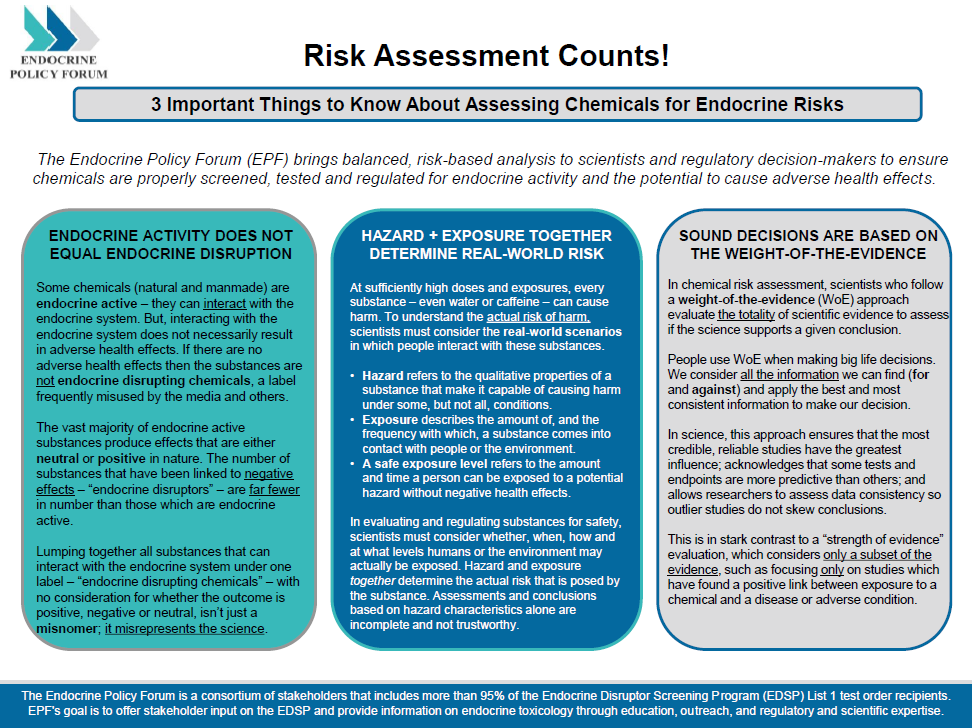One of the most important jobs a public health researcher can undertake is asking stimulating questions that could, through meticulous and valid research, help policymakers make informed decisions about how best to protect human health and the environment.
But it is a long journey from raising initial questions, to designing and conducting robust research, to then having that research independently validated and replicated before the results can ultimately be used to set sound public health policy.
And not every question asked or study conducted — even if the issues raised are initially concerning and important — will ultimately be independently confirmed and lead to a consensus opinion among scientists and, therefore, serve as a solid basis for helping to guide policy decisions.
Understanding endocrine active chemicals
This point could not be more evident this week, as scientists gather at a meeting of endocrinologists in Boston, where some participants are raising important questions about how and whether exposures to substances in the environment can affect human health by interacting with the endocrine system.
Unfortunately, a small group of researchers at this meeting have fallen victim to what has become the all too common temptation to over-hype their initial findings, ignore the critical importance of independent verification, and call for immediate policy changes.
In doing so, they ignore years of extensive study by government and other scientists ,and they over-interpret outcomes which bear on important chemical exposure and human health issues.
Questions regarding chemical exposure and health effects must continuously be asked, but it’s important to remember that many of the research findings being reported to help answer these questions are only preliminary. Researchers are trained to be quite diligent about cautioning readers about the relevance or utility of their findings so early in the scientific process.
 Endocrine Disruptor Screening Program
Endocrine Disruptor Screening Program
While scientists and endocrinologists continue to ask and address important questions, for nearly two decades, regulatory agencies such as the U.S. Environmental Protection Agency (EPA) have been doing the hard work to help answer them.
EPA’s Endocrine Disruptor Screening Program (EDSP) uses a step-by-step, science based process to first identify chemicals that may merely interact with the endocrine system (called “endocrine-active chemicals”), and then to identify the subset of those chemicals that cause adverse health effects as a result of their interaction with the endocrine system (or “endocrine disruptors”) in real-life exposure scenarios.
At the time of the EDSP’s launch in 1998, the EPA had for decades already been using a number of standardized test methods to detect adverse effects of chemicals caused by a number of mechanisms of action, including through interaction with the endocrine system. And EPA took action to regulate chemicals on the basis of the test results to reduce risks to human health and the environment.
The EDSP has added a new set of tools to augment EPA’s existing kit for the purposes of identifying Endocrine Disruptors.
3 important things to know about assessing chemicals for endocrine risks
As part of a risk-based approach to screening, testing and regulating chemicals, three important factors are essential to have a credible, validated, and protective approach.
- Endocrine activity does not equal endocrine disruption: Just because a chemical interacts with the endocrine system does not necessarily mean an adverse health effect will result. Lumping all substances that can interact with the endocrine system under one label – “endocrine disrupting chemicals” – isn’t just a misnomer; it misrepresents the science.
- Hazard + Exposure together determine real-world risk: To understand actual risk of harm, scientists must consider real-world scenarios in which people interact with substances, considering whether, when, how and at what levels humans may actually be exposed. Hazard and exposure together determine the actual risk a substance may pose – assessments and conclusions based on hazard characteristics alone are incomplete, not trustworthy, and can lead to regrettable results.
- Sound decisions are based on the weight of the evidence: A “weight-of-the-evidence” approach evaluates the totality of scientific evidence to assess if the science supports a given conclusion. This approach ensures that the most credible, reliable studies have the greatest influence.
There are no shortcuts to sound science or sound policy. Basing the value and reliability of research and analysis on these three tenets will help ensure, in the midst of clamoring voices and competing studies, our policies and perspectives are ultimately guided by real, tangible and scientifically verifiable results.







